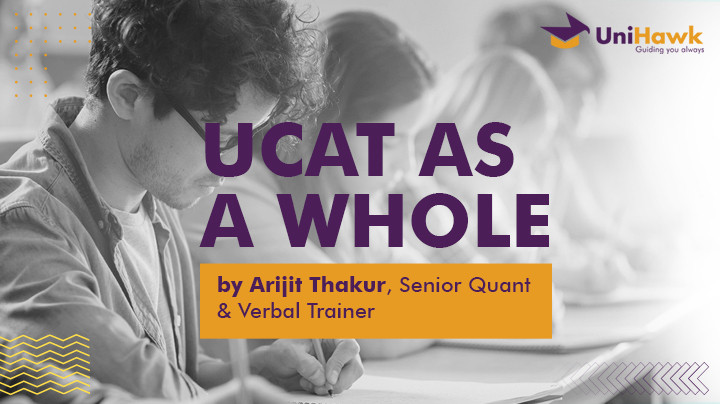Every exam that you take tests both your knowledge and your skills. Some exams, like your board exams, are primarily meant to test your knowledge. In contrast, aptitude exams like the UCAT, the BMAT, the SAT or the ACT are primarily meant to test your skills. Now I should clarify how I distinguish knowledge from skill before I go forward because different people do it in different ways.
You might have known why Lionel Messi’s free kicks are special: the ball travels along a curved trajectory, instead of going straight. If you ask Messi why the ball curves its way through the air, he can’t provide a satisfactory answer but a professor of physics can. The professor’s knowledge of physics allows him to explain the phenomenon. However, the professor can’t hit the ball the way Messi does because he has skills that the professor doesn’t possess.
From the point of view of both someone planning to take an aptitude exam or a trainer like me, the biggest difference between knowledge and skill is that knowledge can be imparted by the trainer or teacher while it’s the candidate who develops the skill – through practice. Imparting knowledge is a one-time activity, at most the lecture needs to be followed with one or two doubt-clearing sessions – in case the internalization of knowledge does not happen to the desired degree. In contrast, practice is a repetitive affair.
In other words, the onus is more on the candidate when it comes to skill development. The trainer can give you a map to follow, not a car to drive; you have to manufacture your own conveyance. Such is the journey we call skill development. And reading efficiency, which covers both your speed of reading and your accuracy of understanding, is the skill most put to test in the UCAT or the BMAT albeit that skill plays a much bigger role in the former.
UCAT has 5 sections. The first section – officially called the “Verbal Reasoning” one – contains 11 passages and 44 questions. It’s a classic reading comprehension test which you will get just 21 minutes to deal with. Every question carries equal weightage and 4 questions pertain to each passage. The second is called the “Decision Making” section. It contains 29 questions – which include 6 different types of puzzles, ranging from verbal puzzles like syllogism to numerical puzzles like probability oriented questions — that you must answer within 31 minutes. The third is officially called the “Quantitative Reasoning” section. The official nomenclature might encourage you to think that it is a math test; it is better described as a mathematical reading comprehension because the difficulty lies not in the mathematical operations – which is generally restricted to calculating percentages – but in the identification of numbers that you should operate on. In this section, you have to answer 36 questions in 25 minutes. The fourth is called “Abstract Reasoning”. It requires you to find patterns in pictures. In this section, you have to answer 50 questions in 12 minutes.
Quite obviously, the UCAT packs too many questions for the time allowed. The questions are not hard to answer in themselves: you answer almost all of them correctly if you have as much time as you want. What makes this exam hard to crack is the coming together of many easy questions and the very short time window of time.
Your performance in each of these 4 sections elicits an integer score anywhere between 300 and 900, 300 being the lowest and 900 being the highest score. In contrast, your performance in the fifth – officially called the “Situational Judgement” one – will be rated an integer from 4 to 1, 4 being the least and 1 being the most favourable. In this section, you are given a situation – described in a short paragraph – in which a junior doctor or a medical student has to make a decision about how he or she should respond to a social or medical phenomenon.
In the first 4 sections, the higher your score, the better it is for your candidature. However, in the fifth, a score of 1 does not benefit you a lot more than a score of 2 would. A score of 4 would automatically disqualify you for a seat in many colleges. A score of 3 keeps your candidacy under Damocles’ proverbial sword. However, a score of 2 works well enough for any college. The difference between 2 and 1 plays a significant role only when you are absolutely tied with another candidate on all other parameters.
Scoring 2800 in aggregate in the first 4 sections is a necessary condition, though not a sufficient one, to qualify for a seat in any of the top colleges. You need to answer about 28 questions correctly in order to get 700 in VR. The same score can be secured with 22 right answers in DM, 27 in QR, and 32 in AR. A score of 2 can be almost guaranteed in SJ if you answer two thirds of the questions, 46 to be precise, correctly.
Your performance in VR is particularly important because, as it is the section where you feel the time crunch most acutely, you will feel exhausted once it is over and that feeling of exhaustion will affect your performance in the following sections. Also, you might just give up on the later sections if the VR does not go well. Therefore, you should take your preparation for VR very seriously. However, there is another significant reason to take the preparation for VR more seriously than that of any other: increasing one’s reading speed takes time. Your preparation for DM will be complete when you have known the peculiar features of the 6 types of questions that you see in that section, and how to tackle each type. That does not take more than 3 or 4 weeks given the right guidance. Your preparation for QR will be complete when you have mastered percentage calculation and how to read the tables. That does not take more than 3 or 4 weeks given the right guidance. Your preparation for AR will be complete when you have become familiar with the factors that you need to notice in the given pictures. That does not take more than 2 or 3 weeks. However, increasing your reading speed may take 3 months. And this is the thing which your trainer can help you the least with.
by Arijit Thakur, Senior Quant & Verbal Trainer





